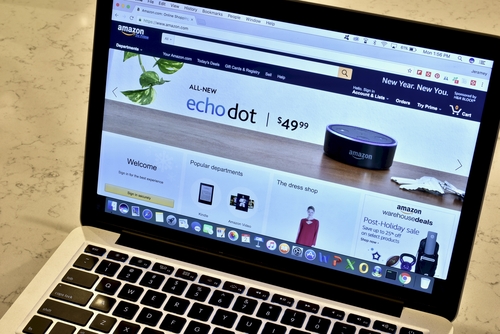There are now different tools and platforms that can help any individual earn money. Fulfillment by Amazon (FBA), for example, allows individuals to purchase products directly from the manufacturer, send these products to one of Amazon’s fulfillment centers, and have Amazon handle the picking, packing, and shipping of these products for a customer’s order. Under this service, Amazon will also handle your customer service and product returns. Because you’re just purchasing products from a manufacturer, you’re not launching a brand or trying to add value to a product – you’re just buying products from well-known brands and work as a seller on Amazon.
Selling wholesale products through FBA doesn’t require a large investment unlike other types of businesses. Because Amazon is already a household name, sellers can be assured that they will be working with a reliable brand once they sign up for FBA services. Aside from these, you can also experience the following benefits once you sell wholesale under FBA:
1. Established customer base:

When you’re a neophyte in the business arena, it’ll take years before you can gain loyal customers. You’ll have to study the market, know your target audience, and be ahead of the competition before you can achieve that goal. Fortunately, selling on Amazon can make the process easier and faster. Amazon has been providing products and services for decades, allowing them to earn millions of customers from different parts of the globe. Once you sell using this platform, you don’t have to worry about looking for your target audience – they’re already there in Amazon! Regardless of the products you choose to resell, you can guarantee that Amazon has the suitable target audience for them.
2. Scalability:
Getting a lot of orders is always good news for business. When this happens, you’ll have the opportunity to gain loyal customers and increase profit. However, when these orders are not met promptly, your name as a seller can be adversely affected as well. Over time, customers might see you as an unreliable seller. Selling wholesale products through FBA steers you away from this direction. Since you’re getting your products from another party, it’ll be easy for you to place orders based on the demands of your customers. If these products are selling like hotcakes, you can quickly increase your inventory in order to satisfy the demands of your customers. Less idle time, more satisfied customers.
3. Lower risks:
Usually, starting a business will require a lot of things. For one, you’ll need to have financial resources to set up your own brick-and-mortar store, hire employees, and use different kinds of marketing mediums. If your business doesn’t thrive and succeed, all of these investments will go to waste. Selling wholesale products through FBA lessens this kind of risk. Because you’re not required to have a store or make use of any marketing mediums, you don’t need to shell out a lot of money. Most often than not, you’ll only need to have enough money to purchase products from a manufacturer. Hence, when your attempts don’t give you any positive results, the loss is not that big.
Before deciding on the type of business you should engage in, it’s important that you also consider the disadvantages of your options. This will allow you to properly set your expectations and determine if such option is apt for your needs, lifestyle, and preference. Selling wholesale products through FBA might provide a long list of benefits, but it also comes with several cons:
Finding products that aren’t already sold on Amazon:

Amazon has been an online platform that sells different kinds of products since 1994. This brand has been operating for years, attracting more and more sellers every day. Because of the variety of products already available through Amazon, you’ll have a hard time looking for another product that is still inexistent in the website. Amazon basically has everything a customer could ever want and need – from cosmetics and electronic devices to books, decors, and even holiday costumes!
Successfully competing with other sellers:
As mentioned, looking for a product that is not yet available on Amazon can become a struggle. As a result, you’ll end up choosing products that are already sold on Amazon. This option still gives you an opportunity to earn, but you’ll have a lot of competition – some of which are already influencers or well-established brands in the market. Leveling out the playing field might mean you’ll have to come up with carefully thought-out pricing and marketing strategies and use other resources such as journal review coaching program.
High order quantities:
Being a reseller in Amazon will only require you to buy products from well-known manufacturers. However, since manufacturers sell products in bulk, you’ll have to make a significant financial investment upfront. You’ll have to pay a large amount of money just so you can purchase their products, sell these in Amazon, and make a profit from it. But the challenge doesn’t end there. Since you brought the bulk of products (probably around a hundred or more), you now have the responsibility of looking for a certain number of buyers just so you can earn from your investment. If you purchased 150 products from a manufacturer and only sold 20 of these, you’ll end up having a stale inventory and not being able to make the most of your investment. You’ll lose money instead of earn.
Being Different Is Good:
More and more people are choosing to purchase products from online platforms rather than doing it from a physical store. The former is more convenient and accessible to many. If you think selling wholesale products through FBA can satisfy these demands and can help you earn a steady income, go ahead and sign up for an account. Just make sure that you’re also using different strategies that can make your products stand out in the market. Remember that you’re not the first and only seller to use this platform.
Read Also:






















